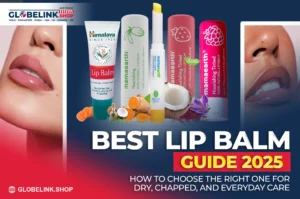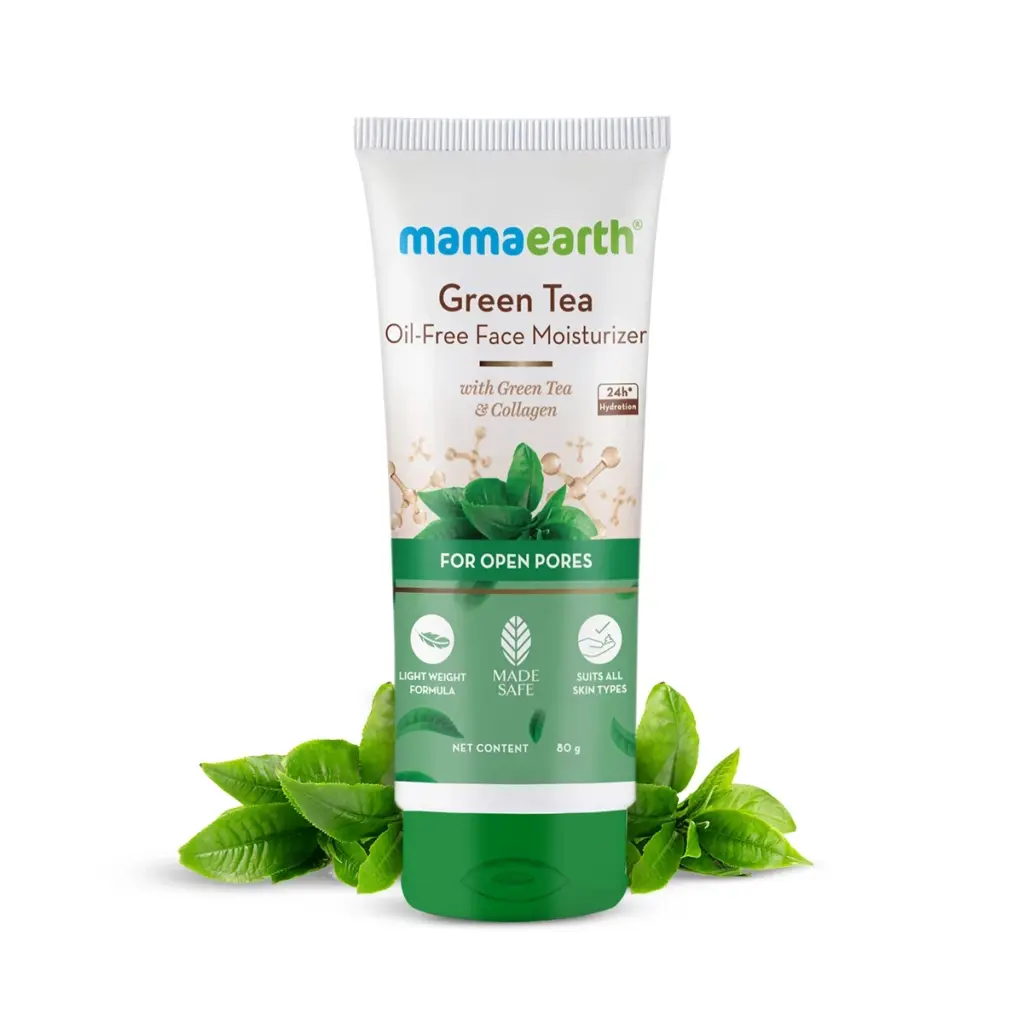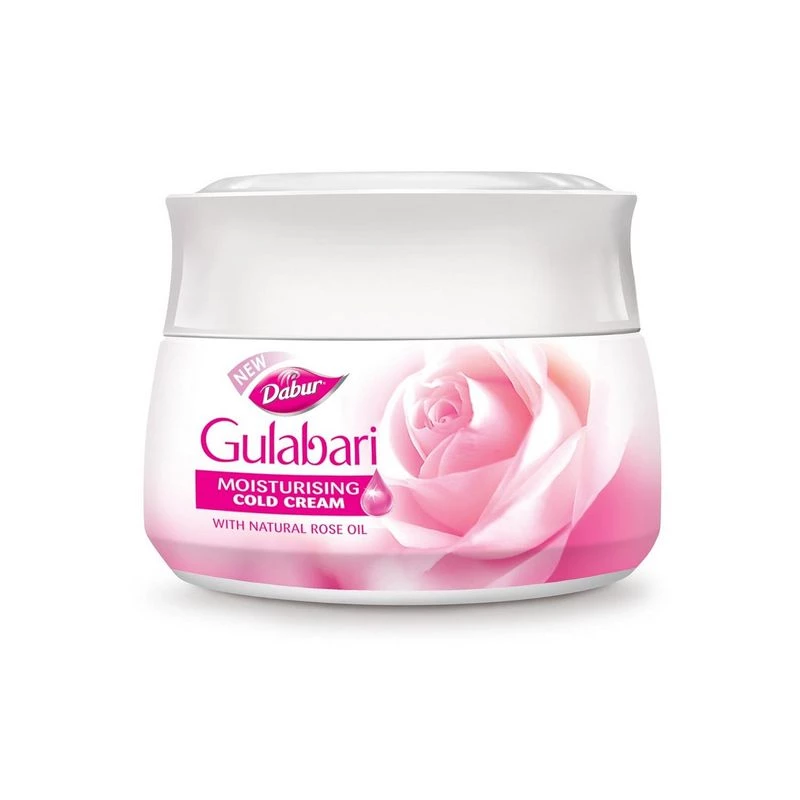
Sunscreen or Moisturizer First? The Skincare Rule You Should Never Break
Skincare is more than just slathering on one product after another. It’s a science. There are processes to understand, which you should keep in mind and follow as a rule. A very common dilemma: sunscreen or moisturizer first? has plagued all of us in our daily routines and has confused skincare enthusiasts for years; honestly, the answer isn’t as straightforward as you might think. Getting the order wrong doesn’t just mess up your morning routine – it can actually make your products less effective and leave your skin vulnerable to damage. The fact remains, there’s no one tailor-made answer that fits all. It depends largely on skin type, products in use, and the type of sunscreen you’ve chosen.

A very important thing we usually miss here: the science behind layering these products actually matters, and once you understand the basics, you’ll never have to guess again. Let’s break down exactly how to layer these skincare essentials so you can protect and hydrate your skin the right way, every single day.
Key Takeaways
- Moisturizer always goes first – Hydration before protection is the golden rule.
- Sunscreens need bare skin contact to work effectively
- Mineral sunscreens form a physical barrier and should be last
- SPF moisturizers aren’t enough – You’d need seven times the amount for proper protection
- You should wait 2-3 minutes between layers to prevent pilling
Why the Order Matters for Healthy Skin

If you wear your raincoat under your clothes, it wouldn’t do much, right?
That’s why order matters. Sunscreen is the protective barrier it needs to be the last step so it can block UV rays properly. Layering your morning skincare in the right order isn’t just about ritual—it significantly affects how well your products work. Think of your skincare routine like dressing for mercurial weather.
Layering skincare correctly ensures each product performs its job. Sunscreen is a shield, not a treatment—it needs to be the final step before makeup or stepping out. Getting the order wrong may mean sunscreen can’t absorb or hydrate effectively or that moisturizer may interfere with UV protection.
- Moisturizer = hydrates and prepares the skin. They are likely your comfortable, breathable clothes that keep your skin soft.
- Sunscreen = forms a protective barrier. The umbrella or raincoat that shields you from harsh sunlight.
- Applying sunscreen first can dilute its efficacy.
And also skin specialists recommend the thin-to-thick application rule because it allows lightweight products to deliver targeted nourishment first. At the same time, heavier moisturizers and protective barriers like sunscreen can form effective layers without blocking the penetration of key ingredients into the skin.
Why Sunscreen Should Be Applied Last
Almost every skincare expert will tell you: Sunscreen should be the last step in your morning routine (before makeup). Why? Because it forms a layer that reflects or absorbs harmful sunlight. If you put something on top of your sunscreen like moisturizer, makeup, or face oil you might disturb or dilute that layer, making it less effective.
Sunscreen’s Role as a UV Blocker
- Reduces the risk of skin cancer.
- Prevents sunburn.
- Slows premature aging like wrinkles, fine lines, and dark spots.
- Helps prevent pigmentation from getting worse.
Even if it’s cloudy or you’re indoors near a window, UV rays can still harm your skin.

Physical vs. Chemical Sunscreens
Physical (Mineral) Sunscreen
Physical sunscreens work like tiny mirrors sitting on top of your skin, literally bouncing UV rays away before they can cause any damage. Made with minerals like zinc oxide or titanium dioxide, these formulas create a protective shield on your skin’s surface that reflects harmful rays right back where they came from. They’re a godsend for sensitive skin because they don’t penetrate into your skin layers – instead, they just sit there doing their job without causing irritation or reactions. The best part is that they work immediately upon application, so you don’t need to wait around before heading outside. Plus, they’re reef-safe and eco-friendly, making them a great choice for both your skin and the environment.
- It works like a mirror, reflecting UV rays away.
- Contains minerals like zinc oxide or titanium dioxide.
- Great for sensitive skin.
- Gentle on sensitive skin
- Immediate protection
- Reef-safe and eco-conscious
How It Works:
- Sits on the skin’s surface
- Reflects UV rays
- Acts as a physical barrier
Chemical Sunscreen
Chemical sunscreens work like a sponge, they absorb UV rays into your skin and then convert them into harmless heat that gets released from your body. These lightweight formulas are incredibly easy to spread and blend invisibly under makeup, making them perfect for daily wear when you want protection without the white cast. They penetrate into your skin to do their work from within, which is why they need about 15-20 minutes to activate before you get sun exposure. Their smooth, lightweight texture makes them ideal for oily skin or anyone who wants their sunscreen to feel like it’s barely there, though they do require that patience for proper activation time.
- Works like a sponge—absorbs UV rays and changes them into harmless heat.
- Lightweight and easy to spread.
- Lightweight texture
- Blends invisibly under makeup
- Ideal for daily wear
How It Works:
- Absorbs UV rays and converts them into heat
- Prevents internal skin damage
What Happens If You Apply Sunscreen and Moisturizer in the Wrong Order?
Getting the sunscreen and moisturizer order wrong not only messes up your routine—it actually reduces your skin’s protection and hydration. If sunscreen goes first and then moisturizer follows on top, essentially, you are diluting or breaking down that crucial UV barrier, leaving gaps where harmful rays can sneak through. Furthermore, your moisturizer can’t do its job properly because it’s not making direct contact with your skin where it needs to hydrate and nourish. Your skin fails to receive proper hydration and lacks adequate sun protection, which can lead to dryness, irritation, and long-term damage. All this could have been easily avoided with the right layering technique. If you put sunscreen first and then moisturizer:
- The moisturizer can dilute the sunscreen and reduce its SPF protection.
- It can leave some areas of your skin unprotected, leading to tanning or sun damage.
If you skip sunscreen entirely:
- Your skin is unprotected against UV rays.
- Over time, you may see wrinkles, dark spots, and uneven skin tone.
How Long Should You Wait Between Applications?
Waiting between applications is a good idea as it gives a few seconds or a minute for the product to set in firmly. It will not take more time, but it will actually allow for each one to work better as a team, to give you better protection.
- After applying moisturizer, wait about 5–10 minutes.
- This allows the moisturizer to soak in, so sunscreen can form a proper protective layer on top.
Using Moisturizers with SPF – Is It Enough?
Moisturizers with SPF can be handy for quick routines, but they’re often not enough for full sun protection. Most people don’t apply a thick enough layer to reach the SPF level on the label, and coverage can be uneven. Plus, they may not offer the same broad-spectrum protection or water resistance as a dedicated sunscreen.
| Aspect | Moisturizer with SPF | Dedicated Sunscreen |
| Protection Level | It can be effective only if applied generously | Designed specifically for UV protection |
| Application Habits | Often under-applied or spread too thin | More likely to be applied correctly |
| Coverage | May miss areas like eyelids, hairline, and neck | Encourages full-face and body coverage |
| Ingredients | Includes hydrators (e.g., glycerin, hyaluronic acid) | Focuses on UV filters (e.g., zinc oxide, avobenzone) |
| Convenience | Combines hydration + SPF in one step | Requires layering but offers targeted protection |
| Reapplication | Often skipped throughout the day | Encourages reapplication every 2 hours |
When It Might Be Enough
- You’re indoors most of the day
- You apply generously (about a quarter teaspoon for the face)
- Your product is a broad-spectrum SPF 30 or higher
- You reapply if you’re sweating or exposed to sunlight
When It’s Not Enough
- You’re mostly outdoors
- You use less than recommended (most people do this)
- You skip reapplication
- You want targeted protection for sensitive areas
Sunscreen Before or After Serum?
Serums are active ingredients that are most effective when used on clean skin or right after toner, so that they can sink in fully. Sunscreen should always be the final step in your skincare routine, which means it comes after your serum. If you put sunscreen on first, it would block your serum from doing its job. Think of sunscreen as the protective shield that locks everything in and guards your skin from the sun.
- Apply serum first, then moisturizer, then sunscreen.
- Serum has active ingredients (like Vitamin C or Hyaluronic Acid) that work best when applied directly on clean skin.
What Goes First for Different Skin Types
1. Oily or Acne-Prone Skin
For oily or acne-prone skin, the goal is to keep things light so your skin stays protected without feeling greasy or clogged. Start with a gentle, oil-free moisturizer—ideally a lightweight gel-based formula that hydrates without adding extra shine. Once that’s absorbed, follow up with a matte-finish sunscreen that controls oil and won’t clog pores.
Few Ideal Moisturizer + Sunscreen Combos for Oily Skin
- Mamaearth Rice Oil-Free Moisturizer + Mamaearth Rice Sunscreen Gel (SPF 50) – Similar ingredients make them more compatible. Both are oil-free and mattifying formulations. These are key preferences for individuals with oily skin to help control excess sebum for reduced shine, and to maintain a fresh look throughout the day. Consistent ingredients like rice water (nourishes) & niacinamide (gives glow) help to maintain hydration and reduce conflict of ingredients.
- Mamaearth Ubtan Ultra Light Gel Moisturizer + Mamaearth Rice Sunscreen (SPF 50)– Their ultra-light gel textures ensure hydration without greasiness. Together, they give hydration and protection without causing breakouts. Turmeric & Saffron brighten skin tone and reduce dullness. Rice water & Niacinamide help control excess oil, refine pores, and fade tan/dark spots.
- Mamaearth Oil-Free Apple Cider Vinegar Moisturizer + Mamaearth HydraGel Sunscreen – It is a great acne-focused hydration paired with an easy gel sunscreen. This combo works well for oily skin because the moisturizer helps control excess oil, balances skin’s pH, and prevents breakouts without feeling heavy, while the Sunscreen (SPF 50, aloe vera & raspberry) offers strong sun protection in a cooling, water-light gel texture that doesn’t clog pores — keeping skin matte, fresh, and protected all day.
- Mamaearth Rice Oil-Free Moisturizer + Mamaearth HydraGel Sunscreen – This moisturizer hydrates without greasiness, helps tighten pores, and gives a smooth, shine-free finish thanks to rice water and niacinamide. Paired with the Mamaearth HydraGel Sunscreen (SPF 50, aloe vera & raspberry), you get lightweight, non-sticky sun protection that soothes skin and won’t clog pores — making it an ideal daily duo for oily skin.
2. Dry Skin
For dry skin, your best strategy is layering rich, creamy moisturizers that really lock in hydration, followed by hydrating sunscreens that won’t strip away that moisture you just sealed in. When you follow up with a hydrating sunscreen rather than a drying, alcohol-based formula, you’re adding another layer of moisture while still getting the UV protection you need. This combination is especially important for dry skin because harsh, lightweight sunscreens can actually counteract all the good work your moisturizer just did, leaving you with that uncomfortable, tight feeling even after you’ve moisturized.
Few Ideal Moisturizer + Sunscreen Combos for Dry Skin
- Mamaearth Aloe Vera & Ashwagandha Moisturizer + Mamaearth Ultra Light Indian Sunscreen (SPF 50) – This moisturizer deeply hydrates, soothes dryness, and improves skin texture. At the same time, the Sunscreen (SPF 50, carrot seed & turmeric) offers high sun protection with a nourishing, non-greasy feel. Together, they keep dry skin moisturized, protected, and comfortable all day. This soothing combo of aloe and nutrient-rich sunscreen claims to suit dry skin best.
- Mamaearth Honey Malai Moisturizer + Mamaearth Vitamin C Daily Glow Sunscreen –The Honey Malai Moisturizer delivers intense nourishment and a creamy, glow-boosting hydration, while the Vitamin C Daily Glow Sunscreen (SPF 50, Vitamin C & Turmeric) protects against UV rays and brightens dull skin. This combo keeps dry skin soft, radiant, and shielded from sun damage throughout the day. This is rich nourishment paired with brightening, light SPF.
- Mamaearth Ubtan Oil-Free Brightening Moisturizer + Vitamin C Daily Glow Sunscreen – The moisturizer gives lightweight hydration while improving dullness with turmeric and saffron, making skin look fresh and healthy. The Sunscreen adds SPF 50 protection plus antioxidant defense to prevent sun damage and boost glow. This combo works well for dry skin because it locks in moisture, shields from UV rays, and enhances brightness all day. Both together brighten while providing hydration and protection.
- Saundarya Aloe Vera Gel Moisturizer (Patanjali) + Mamaearth Ultra Light Indian Sunscreen – The moisturizer delivers a light yet deep hydration boost, calming dryness, and reducing irritation with its soothing aloe base. It absorbs quickly, making it a perfect first layer. Paired with this sunscreen (SPF 50, PA+++), which blends turmeric and carrot seed oil to nourish while offering strong UVA/UVB protection, this combo ensures dry skin stays moisturized, protected, and radiant all day—without the sticky heaviness typical of richer creams. This is a perfect natural aloe gel hydration with a gentle, dry-skin compatible sunscreen.
3. Sensitive Skin
For sensitive skin, your mantra should be “less is more”. Stick with fragrance-free, hypoallergenic products that won’t send your skin into a tantrum with unnecessary additives or harsh chemicals. Mineral sunscreens with zinc oxide or titanium dioxide are your best friends because they sit on top of your skin like a gentle shield rather than absorbing into your skin like chemical sunscreens do. This translates to less chance of skin irritation, skin redness, or that scratchy, stinging feeling that makes you want to wash everything off immediately. Mineral formulas work more like a physical barrier that protects without penetrating deep into your skin layers.
Few Ideal Moisturizers for Sensitive Skin
- Mamaearth Tea Tree Oil-Free Moisturizer is a good fit for sensitive skin because it’s lightweight, non-comedogenic, and free from heavy oils that can clog pores. Tea tree oil helps calm redness and control bacteria, while salicylic acid gently prevents breakouts without over-drying. Its soothing, irritation-free formula avoids harsh fragrances and is designed to maintain the skin’s moisture barrier—perfect for skin that reacts easily.
- Mamaearth Green Tea Collagen Moisturizer is good for sensitive skin because green tea is naturally soothing and rich in antioxidants, helping reduce redness and protect against environmental stress. Collagen helps skin’s elasticity without heaviness. The oil-free, gentle formula hydrates without clogging pores. And, it’s free from strong chemicals and artificial fragrances, lowering the risk of irritation for easily reactive skin.
- Gulabari Cold Cream is good for sensitive skin because it contains rose extracts, which have natural soothing and anti-inflammatory properties. This calms irritation and redness. It has a rich creamy texture that locks in moisture, protecting sensitive skin from dryness and environmental stress. The gentle, floral formulation is typically free from harsh actives, making it less likely to trigger reactions while keeping skin soft and nourished.
How To Properly Layer Moisturizer and Sunscreen
Chemical Sunscreen
When using chemical sunscreen, the key is giving each product time to do its job properly. Start with a clean face, add any serums you use, then apply your moisturizer and wait 5-10 minutes for it to fully absorb into your skin. The waiting period is non-negotiable because chemical sunscreens need to penetrate your skin to work effectively, and they can’t do that if your moisturizer is still sitting on the surface. Once your moisturizer has soaked in, apply your chemical sunscreen and then give it another 15-20 minutes before heading outside. This final wait time allows the chemical filters to activate and form a protective barrier under your skin. Skipping these waiting periods is like trying to paint over wet paint – everything just slides around and nothing works the way it should.
Step-by-Step Routine for Chemical Sunscreen

Step 1: Cleanse your face.
Step 2: Apply serum (if using).
Step 3: Apply moisturizer and let it absorb for 5–10 minutes.
Step 4: Apply chemical sunscreen.
Step 5: Wait 15–20 minutes before stepping into the sun.
Mineral sunscreen
It makes your morning routine much simpler and faster than chemical formulas. After cleansing and applying any serums, put on your moisturizer and let it settle for a few minutes. Then finish with mineral sunscreen as your absolute final step – think of it as creating a physical shield on top of everything else. The best part about mineral sunscreens is that they work immediately upon application, so you don’t need to hang around waiting 20 minutes before stepping outside.
Step-by-Step Routine for Mineral Sunscreen

Step 1: Cleanse your face.
Step 2: Apply serum (optional).
Step 3: Apply moisturizer.
Step 4: Apply mineral sunscreen as the final step (no need to wait before sun exposure).
Final Thoughts on Getting Your Routine Right
Think of your skincare routine like getting dressed for winter. Your moisturizer is like putting on a cozy sweater that keeps you warm and comfortable from the inside. Sunscreen is like throwing on a waterproof jacket that shields you from rain, wind, and cold. Same with your skin – moisturizer goes on first to hydrate and nourish, then sunscreen creates that protective outer layer. Get the order right, and you’re perfectly protected and comfortable all day long. Proper layering isn’t just skincare—it’s skin protection. Sunscreen should always be the last step before makeup or heading out. Whether you’re oily, dry, or sensitive, the right products and order can make all the difference.
Golden Rule: Moisturizer first, sunscreen last. Always.
Related Posts

Best Lip Balm Guide: Choose the Right One for Dry, Chapped, and Everyday Care
Share this productLips are delicate. They do not have oil glands, so they rely completely on outside care. That is...

Retinol Serum: Benefits, Uses & Best Options for Every Skin Type
Share this productMost of us reach a point where regular moisturisers and face washes just do not cut it anymore....

Aloe Vera Gel for Face: Remedies for Dark Spots and Hyperpigmentation
Share this productLong ago, people believed every plant carried its own kind of magic. Some had flowers, some had fruit,...



